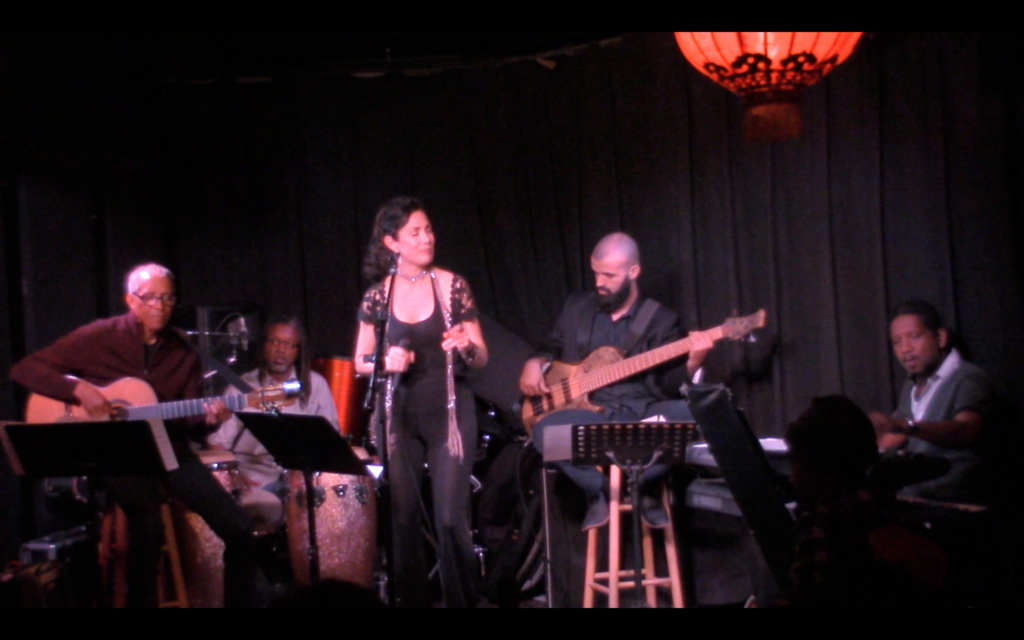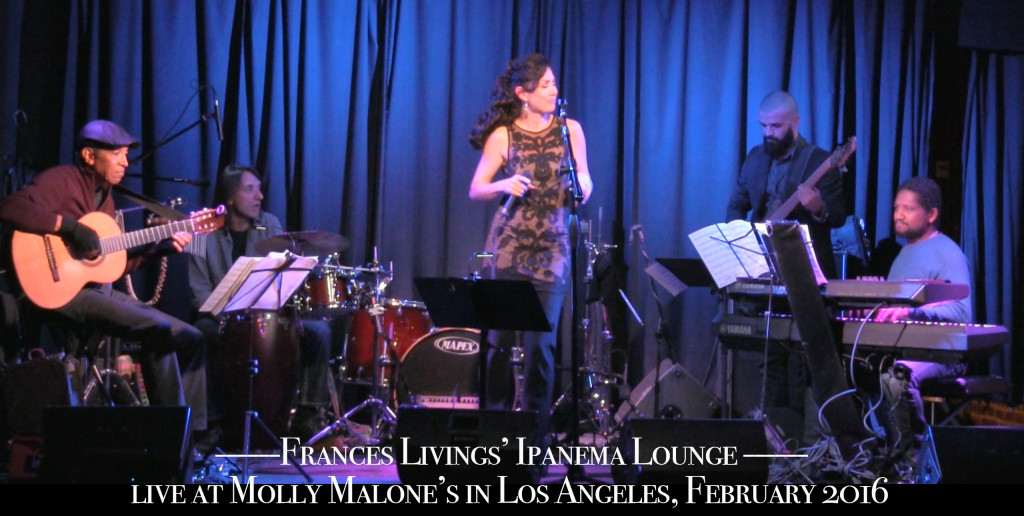
I recently performed with my Latin jazz band, Frances Livings’ Ipanema Lounge at the West Covina library in California in honour of National Hispanic Heritage month, which is celebrated each year, from September 15 to October 15. For me it was a welcome occasion to dig a little deeper into my Spanish repertoire. In this blog post I would like to share my love of some of these often highly romantic and rhythmically enticing songs and some of their backgrounds.
During National Hispanic Heritage month the focus is on the histories, cultures and contributions of American citizens whose ancestors came from Spain, Mexico, the Caribbean and Central and South America. Especially significant is hereby, the 15th of September because it is the anniversary of independence for Latin American countries Costa Rica, El Salvador, Guatemala, Honduras and Nicaragua. In addition, Mexico and Chile celebrate their independence days on September 16 and September 18, respectively. Also, Columbus Day or Día de la Raza, which is October 12, falls within this 30-day period.
I always love the process of searching for new songs to explore and interpret. So I spent a fair amount of time searching for new material and came across some beautiful songs to add to my Spanish repertoire – some written by contemporary songwriters, others deemed meanwhile almost classic. Since the venue I performed at was a library, a place of knowledge with most likely, information hungry patrons, I thought it would be nice to also provide some background information to some of the songs and music styles – which would ultimately, also honour the specialness of these Latin compositions for the occasion.
La Puerta by Luis Demetrio
Long before I even imagined that one day, I would develop such a passion for singing jazz songs in foreign languages, I fell in love with “La Puerta”. It is a slow, heart-felt ballad that was written by the Mexican singer and songwriter Luis Demetrio (1931-2007). I haven’t been able to find out when it was exactly written or recorded for the very first time but in 1957 “La Puerta” was placed among the great favorites of the Spanish-speaking public, interpreted by the famous Chilean singer Lucho Gatica. It has since then been made popular by contemporary singers like Luis Miguel and Laura Fygi. For a very long time it was the only Spanish song I had in my repertoire – but that was before I moved to Los Angeles…
I later discovered that Demetrio co-wrote another favourite song of mine, “¿Quién será?”, a bolero-mambo better known to the English speaking world as “Sway”. Like often falsely assumed however, Demetrio didn’t co-write the song with his fellow songwriter Pablo Beltrán Ruiz (1915 – 2008) but sold the rights to him. Beltrán recorded the song for the first time with his orchestra in 1953 as an instrumental cha-cha-chá. Dean Martin’s 1954 tongue-in-cheek recording with the Dick Stabile orchestra in English was then the first version to achieve considerable success in the United States. Norman Gimbel (1927 – 2018) who in the 1960’s became famous through his lyrics for “The Girl From Ipanema”, which is probably the most famous Antônio Carlos Jobim song, wrote the English lyrics for “Sway”. I recorded both “La Puerta” and “Sway” on my 2016 album, inspired by Dean Martin and the Mexican pop-singer Kalimba, I recorded it half in English, switching to the Spanish lyrics in the first chorus.
Hoy by Gian Marco
Another song really wanted to introduce at the library performance – and that I simply love singing live (ideally, with a minimal instrumentation of guitar, bass and percussion) –, is “Hoy” (which means in Spanish “today”). This contemporary ballad, written by the Peruvian singer-songwriter Gian Marco Zignago, known as “Gian Marco”, became popular after Gloria Estefan recorded the song on her Spanish album, “Amor y Suerte”. Estefan is the original Latin crossover international star. First as lead singer of Miami Sound Machine and then as a soloist, she has achieved success in both languages, English and Spanish.
Especially for the occasion of Hispanic Heritage Month I thought it would be interesting and relevant to introduce “Hoy” because it addresses the topic of being an immigrant, of your heart belonging somewhere else. Gian Marco wrote the song, after immigrating to the United States. Its lyrics, carried along by a beautifully crafted flowing melody, sounds like a love letter to a person with many beautiful metaphors, but is ultimately a love letter to his home country Peru that he left when he moved to Florida to pursue his music career. “Un camino empinado” (a steep path) for instance, is a reference to the Andes that are the longest continental mountain range in the world, and extend from north to south through seven South American countries: Venezuela, Colombia, Ecuador, Peru, Bolivia, Chile and Argentina. The line “tengo el mar del otro lado” means as much as, I have the sea on the other side, which refers to when he lived in Miami, saying in an interview that his ocean is “the Pacific, not the Atlantic”.
In his official video for the song he even integrated some of Peru’s traditional instruments: towards the middle, you can listen to and watch traditional Peruvian music and dancers. His musicians are playing a small guitar called the “Charango”, which is a native Peruvian instrument. A charango is a relatively small string instrument, around 65 cm long, similar to the size of a ukulele. It typically has ten strings in five courses of two strings each, but many other variations exist. Traditionally, they were made of armadillo shell, today superseded by wooden parts. Some designs however, still imitate the patterns of armadillos on the rounded back. Interestingly, and somewhat serendipitous (why it caught my attention maybe), is that as a spiritual animal totem, the armadillo symbolizes that it is time to define your own boundaries and space. It also symbolizes trust, peace, pacifism, balance, complexity, and compassion.
Did you enjoy this post? If so, why not…









